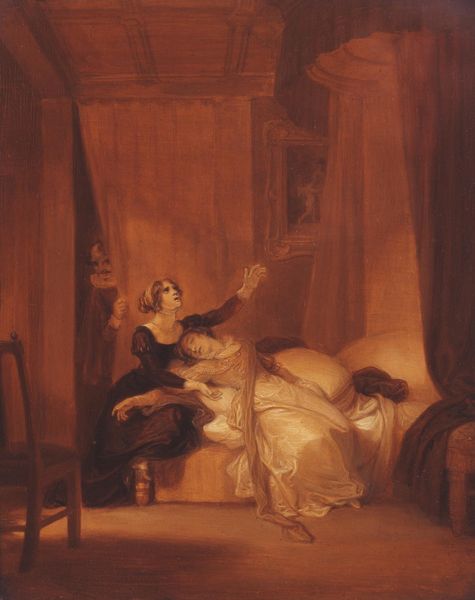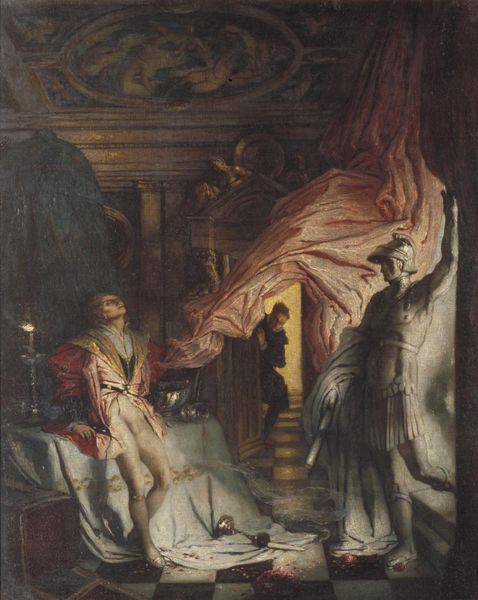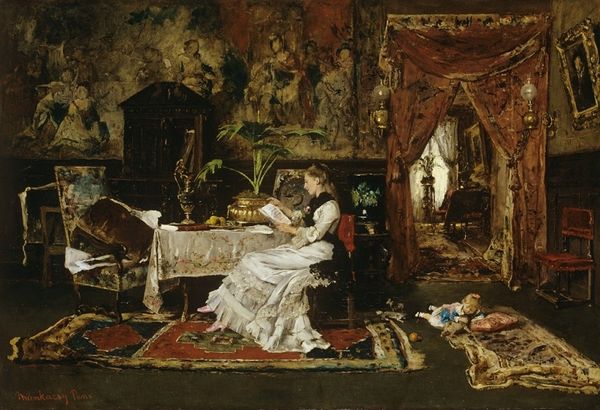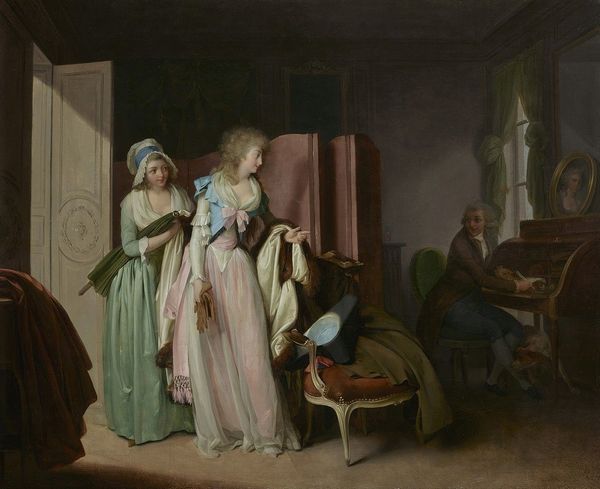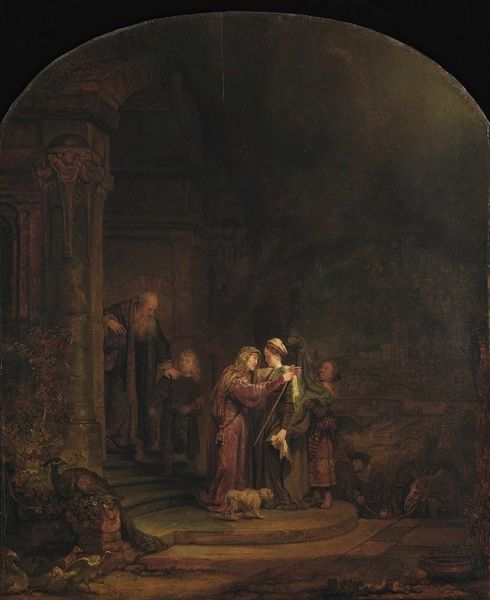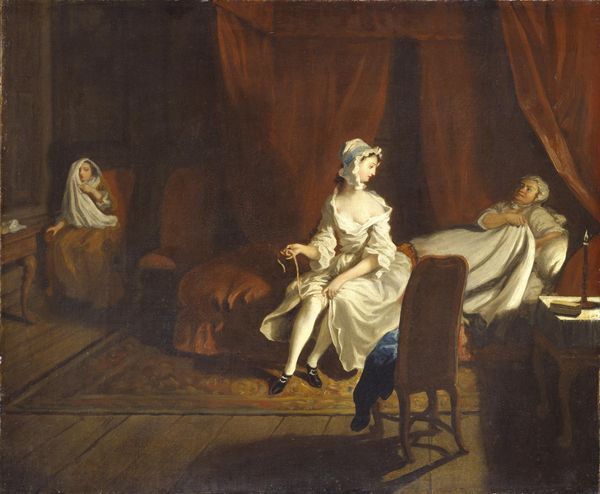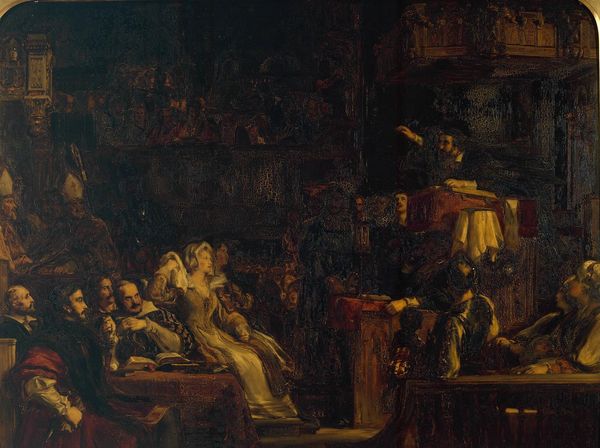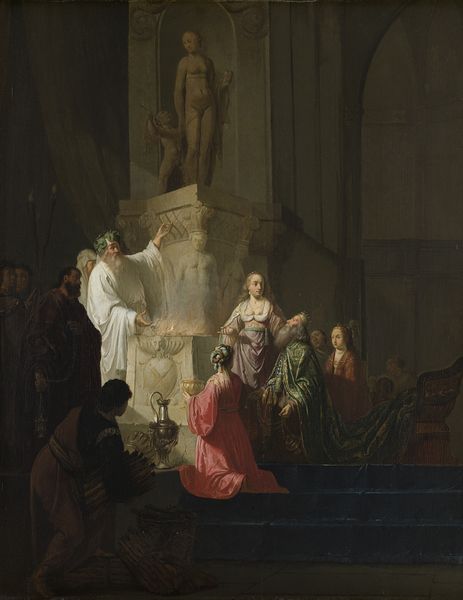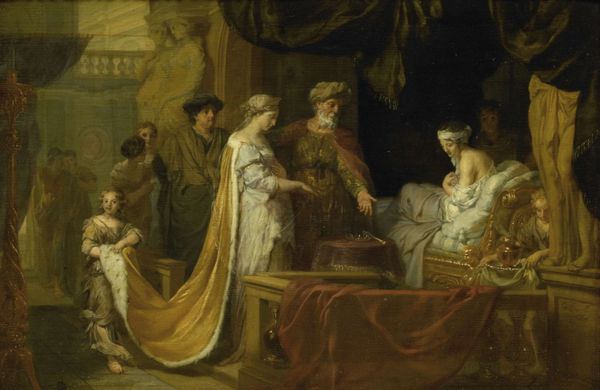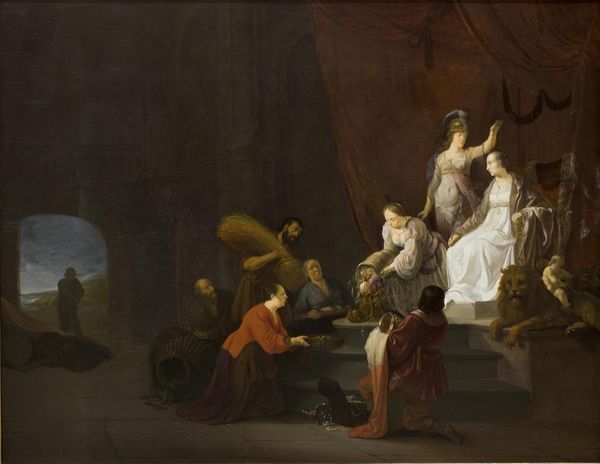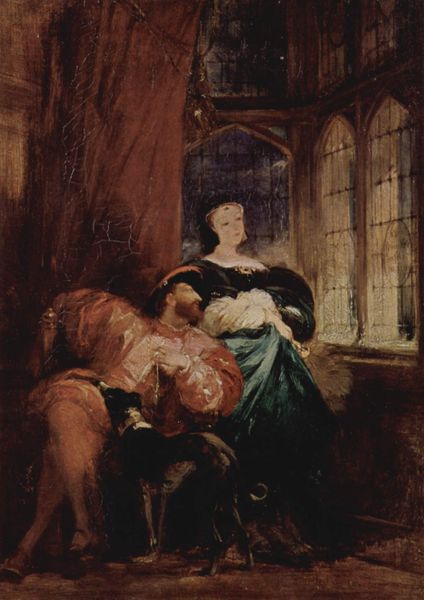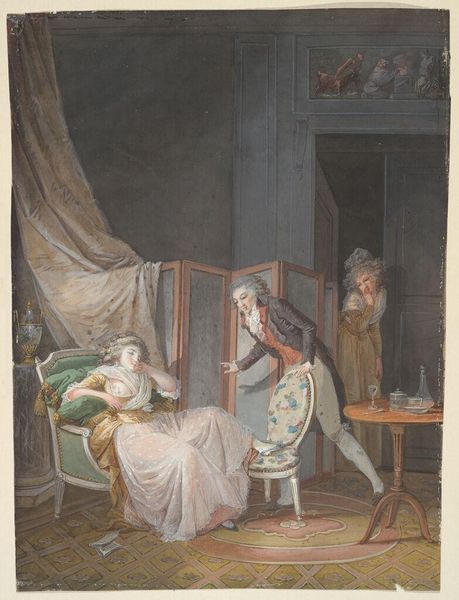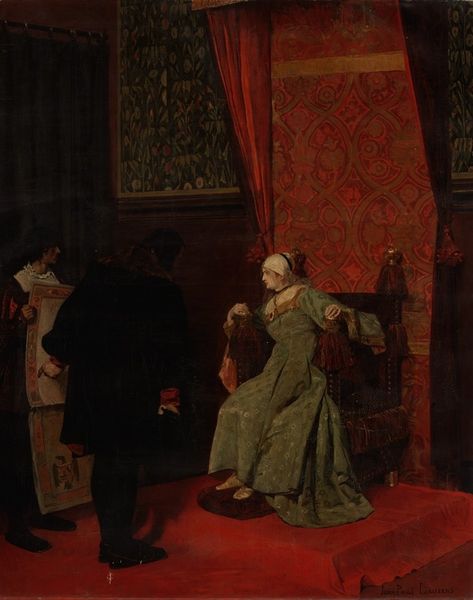
Dimensions: support: 1524 x 2743 mm
Copyright: CC-BY-NC-ND 4.0 DEED, Photo: Tate
Editor: This is Daniel Maclise’s painting, "The Play Scene in 'Hamlet'," housed at the Tate. It’s a really dramatic, shadowy piece. What can you tell me about it? Curator: Maclise presents us with a very theatrical space, but let's consider the historical context. How does this rendering of Hamlet reflect Victorian anxieties about succession, gender roles, and the destabilizing effects of doubt? Editor: So it’s about more than just the drama of the play itself? Curator: Precisely. Think about Ophelia, positioned so prominently. Is she merely an observer, or does her presence subtly critique the power dynamics at play within the court, and within Victorian society itself? Editor: I hadn't thought about it that way. It gives the painting a whole new layer. Curator: Indeed. Maclise uses the play within a play to reflect on the broader societal drama of his time. Editor: I see it now, thanks for highlighting the cultural context.
Comments
tate 7 months ago
⋮
http://www.tate.org.uk/art/artworks/maclise-the-play-scene-in-hamlet-n00422
Join the conversation
Join millions of artists and users on Artera today and experience the ultimate creative platform.
tate 7 months ago
⋮
The ‘play within a play’ in Hamlet was just the sort of dramatic caprice that attracted the Romantics to Shakespeare. Hamlet, prince of Denmark, arranges for strolling players to re-enact the murder of his father, the king, by his brother, Claudius; Claudius had succeeded to the throne. The ghost of Hamlet’s father had revealed the murder at the beginning of the play.Maclise shows the performance taking place in the hall of Elsinore Castle. Claudius is about to leap to his feet, and in doing so reveal his guilt. Gallery label, May 2007
